Nothing quite compares to the delightful aroma of fresh strawberry muffins baking in your kitchen. Furthermore, these soft, fluffy treats strike the perfect balance between sweetness and natural fruit flavor. Whether you’re preparing breakfast for the family, packing lunch boxes, or simply treating yourself to an afternoon snack, these strawberry muffins deliver exceptional taste every single time.
Table of content :
- Why Choose This Strawberry Muffins Recipe?
- Essential Ingredients: What You Need for Strawberry Muffins
- Step-by-Step Instructions: How to Make Perfect Strawberry Muffins
- Storage Tips for Fresh Strawberry Muffins
- Recipe Categories and Serving Suggestions
- Baking and Cooling Your Strawberry Muffins
- Freezing Instructions for Strawberry Muffins
- Nutritional Information Per Serving
- Other recipe :
Why Choose This Strawberry Muffins Recipe?
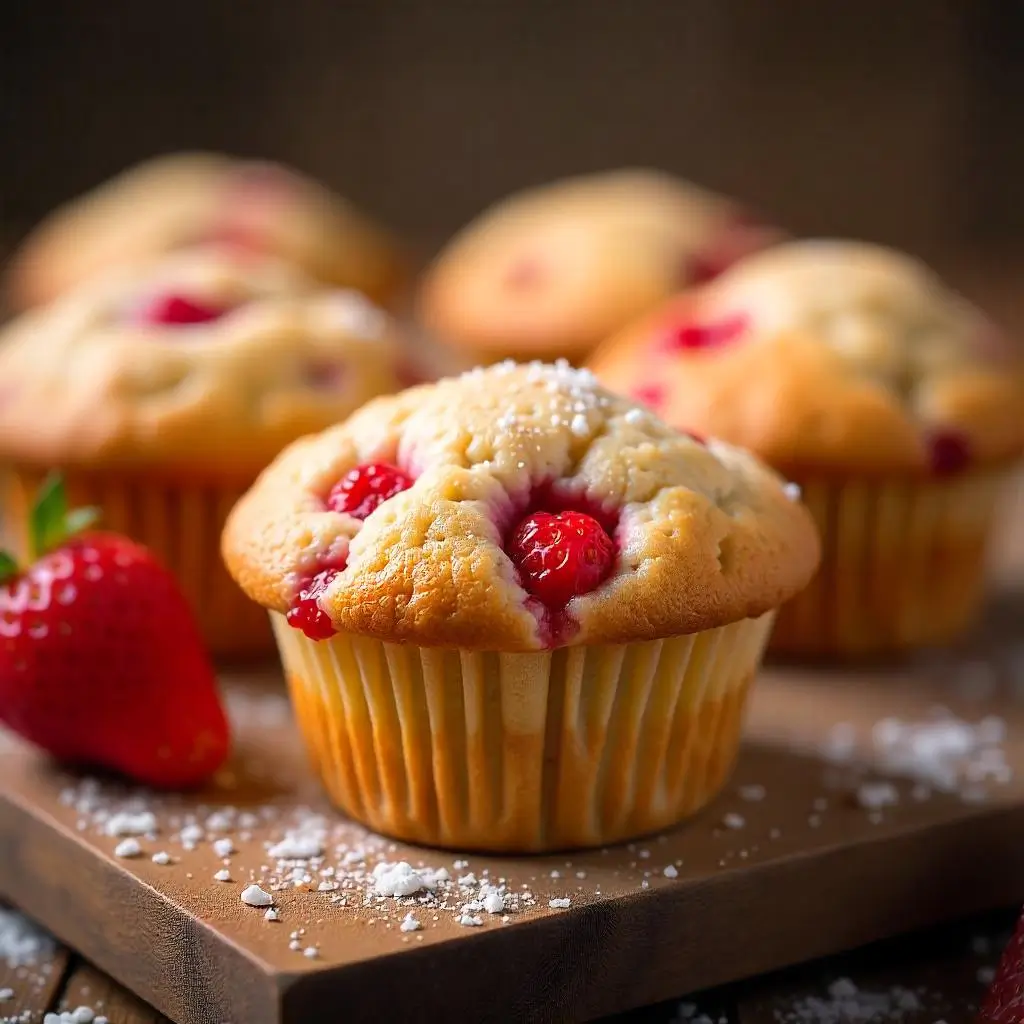
First and foremost, strawberry season brings incredible opportunities to showcase these ruby-red gems in baking. Unlike traditional blueberry muffins, these strawberry muffin recipes highlight the natural sweetness and vibrant color of fresh berries. Additionally, this particular recipe uses a generous amount of strawberries, ensuring every bite bursts with fruity goodness.
Moreover, the secret ingredient that sets these muffins apart is a touch of almond extract. Consequently, this subtle addition enhances the strawberry flavor without overwhelming the delicate taste profile.
However, when strawberries aren’t in season, don’t worry! Instead, consider trying other fruity muffin recipes such as lemon poppy seed, banana walnut, or apple cinnamon varieties. These alternatives will certainly satisfy your muffin cravings year-round.
Essential Ingredients: What You Need for Strawberry Muffins
To begin with, gathering quality ingredients makes all the difference in your final results. Here’s everything you’ll need:
Dry Ingredients:
- 2 cups all-purpose flour (divided)
- 2 teaspoons baking powder
- 1/2 teaspoon salt
- 1/2 cup granulated sugar
Wet Ingredients:
- 1/2 cup unsalted butter, melted
- 2 large eggs, room temperature
- 3/4 cup whole milk
- 1 teaspoon vanilla extract
- 1/4 teaspoon almond extract
Fresh Additions:
- 1 1/2 cups fresh strawberries, hulled and diced
- 2 tablespoons turbinado sugar for topping
Important Note: Reserve 2 tablespoons of flour specifically for coating the strawberries. This technique prevents them from sinking during baking.
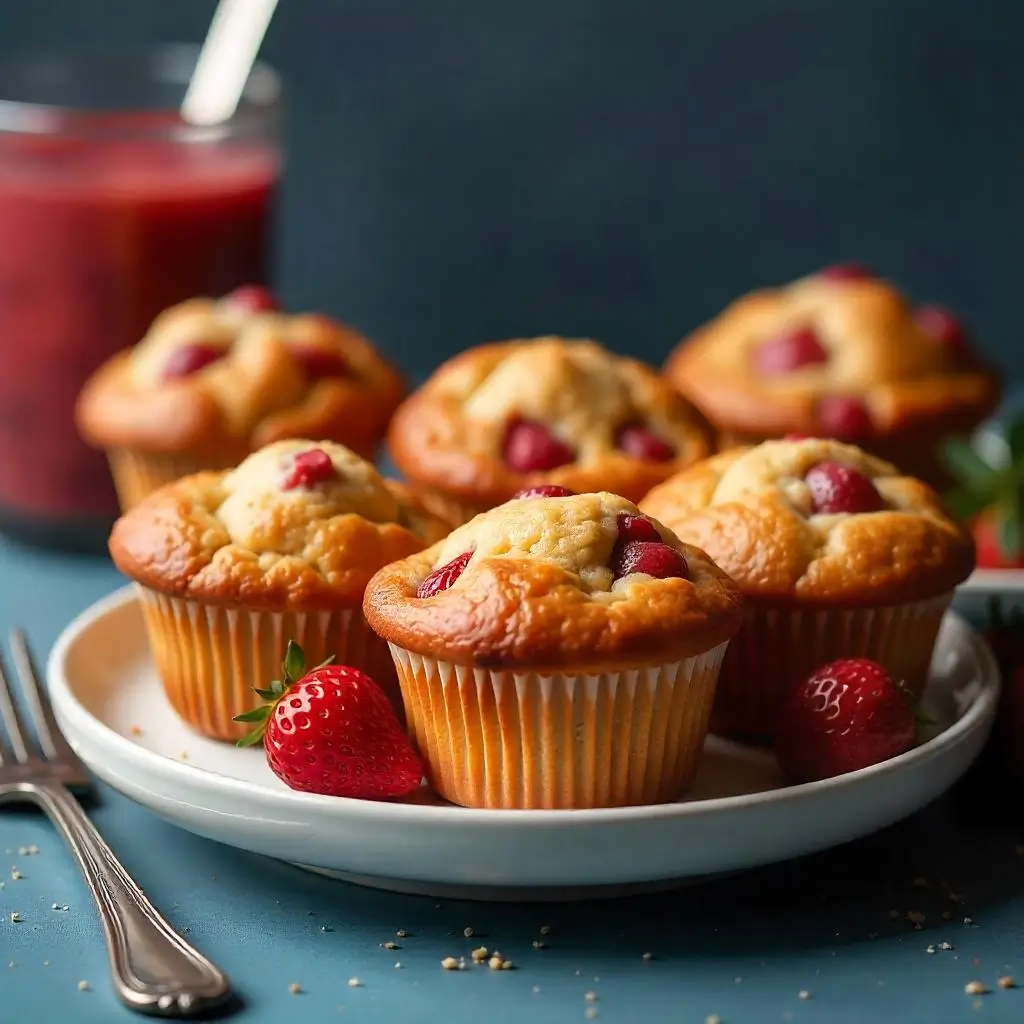
Step-by-Step Instructions: How to Make Perfect Strawberry Muffins
Step 1: Prepare Dry Ingredients
Initially, preheat your oven to 375°F (190°C). Then, in a large mixing bowl, whisk together the flour (minus 2 tablespoons), baking powder, salt, and granulated sugar. Set this mixture aside while you prepare the other components.
Step 2: Prepare the Strawberries
Meanwhile, dice your fresh strawberries into small, uniform pieces. Next, toss them with the reserved 2 tablespoons of flour until evenly coated. This crucial step ensures the berries distribute evenly throughout the batter rather than sinking to the bottom. Finally, set aside about 1/4 cup of the floured strawberries for topping.
Step 3: Create the Wet Mixture
Subsequently, in a separate bowl, whisk the melted butter with the remaining granulated sugar until well combined. Afterward, add the eggs one at a time, beating well after each addition. Then, stir in both vanilla and almond extracts until the mixture becomes smooth and fragrant.
Step 4: Combine Wet and Dry Ingredients
Now comes the critical mixing phase. First, add half of the flour mixture to the wet ingredients, stirring gently until just combined. Next, pour in half of the milk, mixing briefly. Then, add the remaining flour mixture, followed by the rest of the milk. Remember, overmixing leads to tough muffins, so stop as soon as the ingredients come together.
Step 5: Fold in the Strawberries
Carefully fold the flour-coated strawberries into the batter using a rubber spatula. Use gentle, sweeping motions to distribute the berries evenly without deflating the batter’s airiness.
Step 6: Prepare Your Muffin Pan
Since strawberries release juices during baking, line your 12-cup muffin tin with paper liners or spray thoroughly with cooking spray. Paper liners work particularly well for preventing sticking and making cleanup easier.
Step 7: Fill and Top the Muffins
Divide the batter evenly among the prepared muffin cups, filling each about 3/4 full. These muffins rise beautifully, so don’t worry about generous portions. Then, top each muffin with the reserved strawberry pieces and sprinkle with turbinado sugar for that bakery-style golden, crunchy top
Storage Tips for Fresh Strawberry Muffins
Undoubtedly, these muffins taste best when enjoyed fresh from the oven. However, they maintain their quality when stored properly at room temperature for up to 3 days in an airtight container.
For longer storage, these muffins freeze beautifully for up to 3 months. Simply wrap each muffin individually in plastic wrap, then place them in a freezer-safe bag.
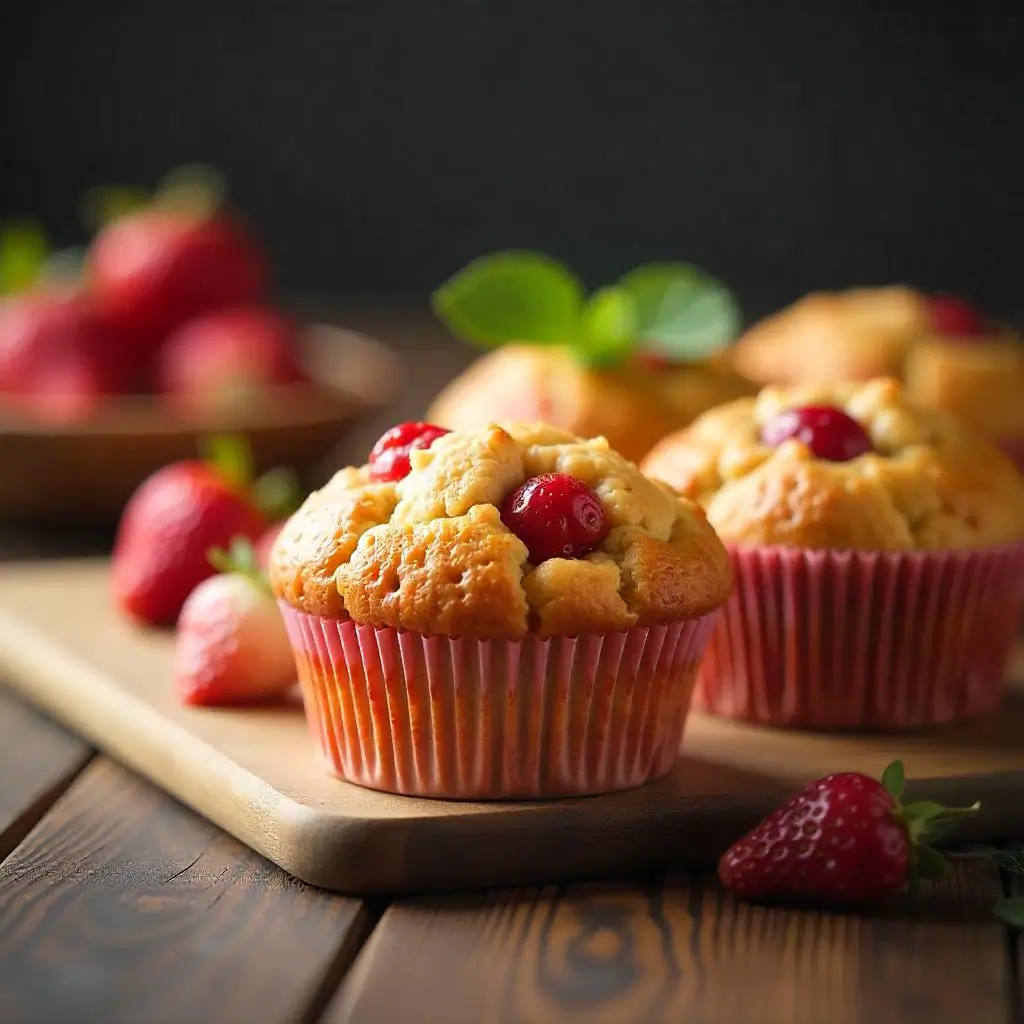
Recipe Categories and Serving Suggestions
These versatile strawberry muffins fit perfectly into several meal categories:
- Breakfast & Brunch: Pair with coffee or fresh juice
- Freezer-Friendly: Perfect for meal prep
- Muffins & Quick Breads: Classic American baking
- Kid-Friendly: Great for lunch boxes
Baking and Cooling Your Strawberry Muffins
Place the filled muffin pan in the preheated oven and bake for 22-25 minutes. The muffins are done when they turn golden brown and a toothpick inserted into the center comes out clean or with just a few moist crumbs.
Once baked, allow the muffins to cool in the pan for 5 minutes. This brief cooling period prevents them from falling apart when removed. Afterward, transfer them to a wire cooling rack to cool completely before serving.
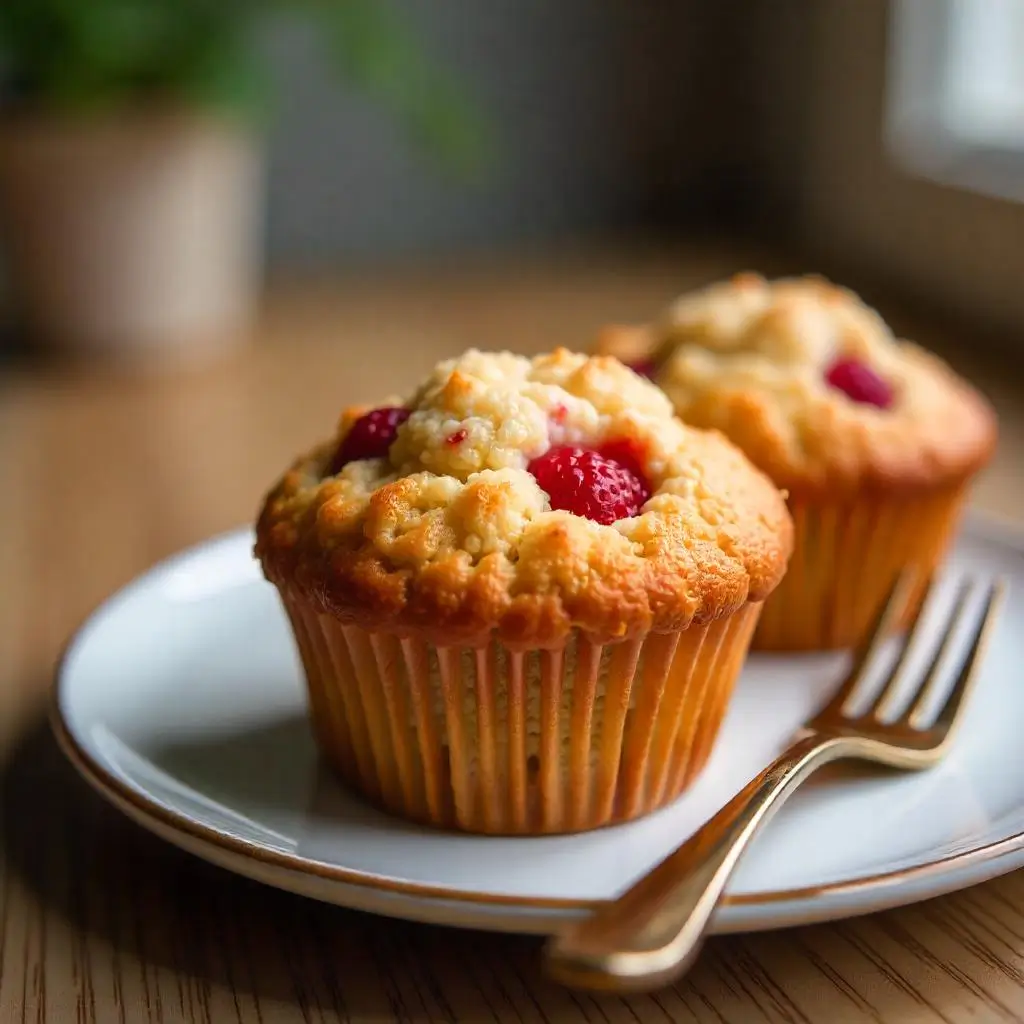
Freezing Instructions for Strawberry Muffins
To freeze successfully, first ensure the muffins are completely cooled. Then, wrap each muffin tightly in plastic wrap or aluminum foil. Next, place the wrapped muffins in a freezer-safe zip-top bag, removing as much air as possible.
When ready to enjoy, thaw frozen muffins at room temperature for about an hour. Alternatively, microwave individual muffins for 30-45 seconds for a warm, fresh-baked taste.
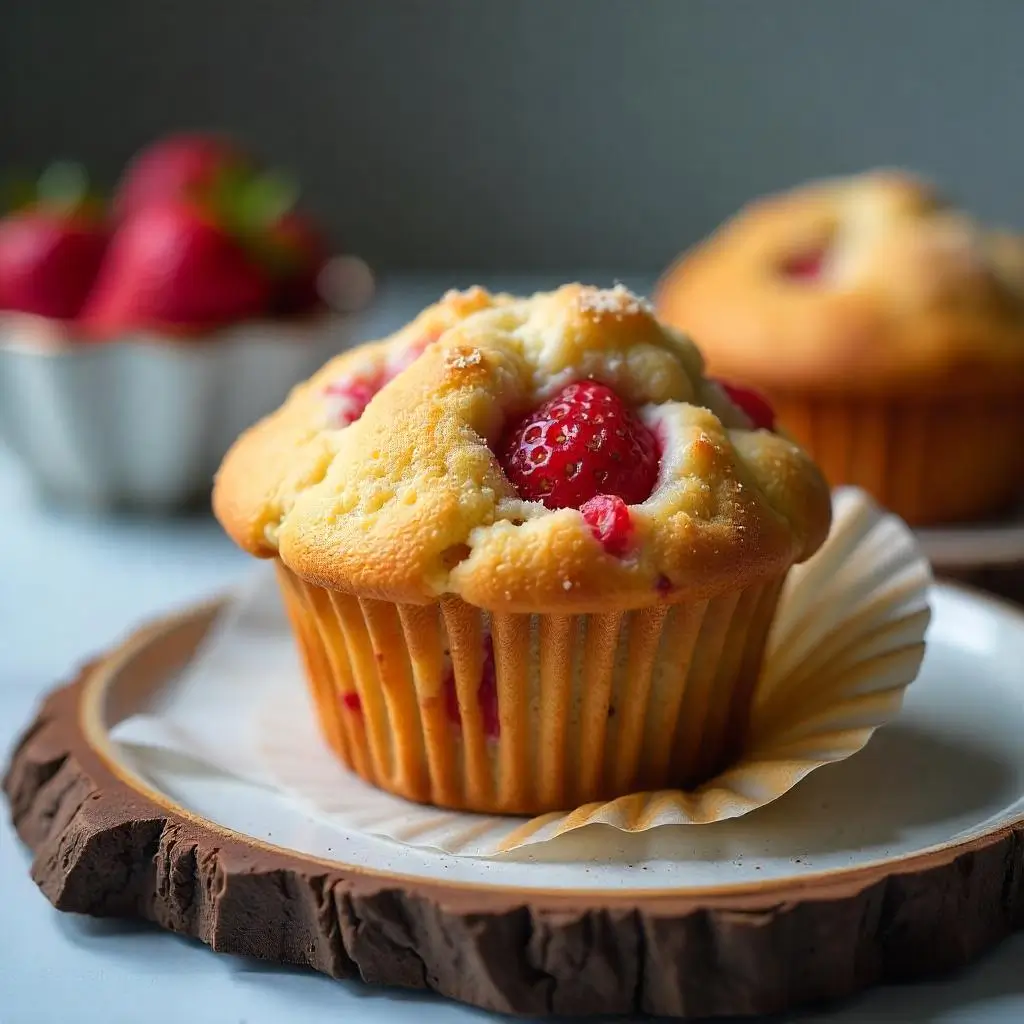
Nutritional Information Per Serving
Each delicious muffin contains approximately:
- Calories: 185
- Fat: 6g
- Carbohydrates: 29g
- Protein: 4g
- Fiber: 2g
- Sugar: 12g
Other recipe :

In summary, this strawberry muffins recipe delivers bakery-quality results in your own kitchen. The combination of fresh strawberries, subtle almond extract, and proper technique creates muffins that are both impressive and satisfying. Whether you’re an experienced baker or just starting out, these muffins offer guaranteed success and delicious results every time.
Try this recipe during peak strawberry season, and you’ll understand why it has become a favorite among home bakers everywhere!
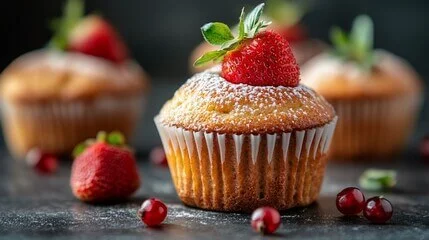
“How to Make Perfect Strawberry Muffins Every Time: A Simple Recipe”
Description
Learn how to make perfect strawberry muffins with this easy recipe. Soft, fluffy, and packed with fresh strawberries—ideal for breakfast or a sweet snack!
Ingredients
Ingredients
Fresh Additions
Instructions
- Prepare Oven & Dry Ingredients
- Preheat oven to 375°F (190°C). In a large bowl, whisk together flour (minus 2 tablespoons), baking powder, salt, and granulated sugar.
- Prepare Strawberries
- Dice strawberries into small pieces. Toss with reserved 2 tablespoons flour until coated. Set aside ¼ cup for topping.
- Mix Wet Ingredients
- Whisk melted butter with remaining sugar. Add eggs one at a time, then vanilla and almond extracts until smooth.
- Combine Ingredients
- Alternate adding flour mixture and milk to wet ingredients, beginning and ending with flour. Mix just until combined.
- Add Strawberries
- Gently fold flour-coated strawberries into batter using a rubber spatula. Don’t overmix.
- Fill & Top Muffins
- Line muffin tin with paper liners. Fill cups ¾ full with batter. Top with reserved strawberries and turbinado sugar.
- Bake & Cool
- Bake 22-25 minutes until golden brown and toothpick comes out clean. Cool in pan 5 minutes, then transfer to wire rack.
Instructions
Notes
- For best results, use fresh strawberries and avoid overmixing the batter to keep the muffins light and tender.